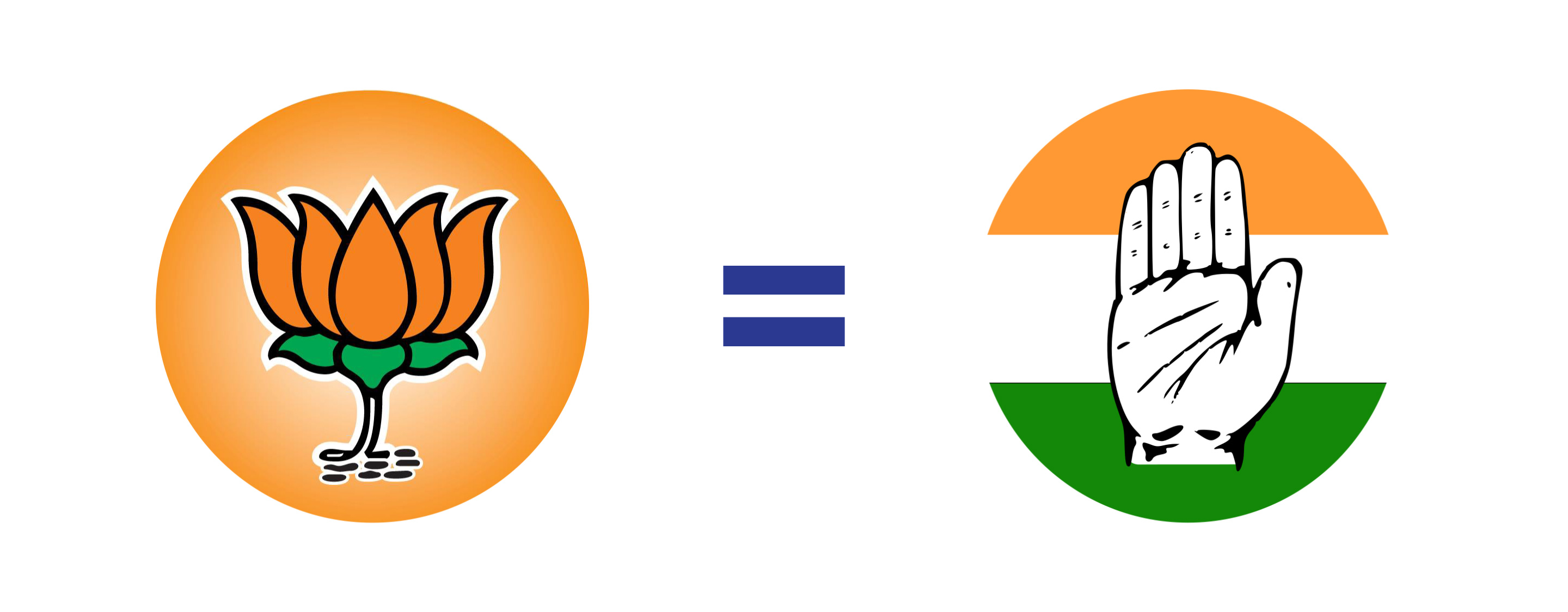Are these two parties really as different as we think they are? Here are some points that will prove otherwise - BJP = Congress!
Congress and BJP are the two hegemonies of Indian politics with two vastly different identities. They both have different values and cater to two diverse groups of people in India. One party thrives on its historical legacy, while the other sells itself through populist speeches and hyper-nationalism. While one is perceived for its liberal approach and extended sense of individual freedom, the other seemingly holds radical conservative values and tends to curb individual freedom.
But are these two parties really that different?
Not really.
Here are 10 similarities between Congress and BJP.
 Courtesy – The Quint
Courtesy – The Quint
LGBT rights
Section 377 of the Indian Penal Code criminalises homosexuality. Both parties have never considered changing this. We live in a country where marrying someone from your own sex is a crime but raping your wife is not. And neither party has challenged this yet. What about individual freedom and choice?

2. News disallowed on private radio
Private broadcasters in India are not allowed to broadcast news. Radio companies are after all media houses which go through enormous regulations and pay an enormous amount in obtaining licences. They should be allowed to function like normal media houses and be free to give news.
Why does government want to control news on the radio? It has a much wider outreach, even in rural areas where traditional media is absent. Hmm, nothing fishy at all here.

3. Goods and Service Tax (GST)
BJP officially introduced and implemented GST while Congress opposed it. But this was not always the case. When Congress was in power it tried to implement GST and BJP was the one opposing it.

4. Violation of property rights
In the first two decades of independence, Congress seriously undermined property rights by shielding them from judicial interference. Further, in 1978 the 44th amendment robbed Indians of their right to property. Ever since, there have been consistent violations of property rights by both parties. None of the party has tried to give Indians back their right to property. Every other day we come across news of farmers protesting for their property.

5. Right to Education (RTE)
By now, its common knowledge that RTE is, in fact, detrimental to the education scenario in India. Due to excessive and redundant regulations that RTE imposes, thousands of private and budget schools have closed. Not every school or trust has the means to achieve the exact infrastructure (no of windows, doors, playground details etc) that the government has prescribed under the law. This has affected the education scene in India but none of the parties have even acknowledged the flaws in RTE, let alone reform it.

6. Government running business
Both the parties have been running inefficient and failed businesses for decades. These companies are nothing but a leech to the taxpayers since they make products or services which the private sector already is good at making.
Why should the taxpayers be paying for the governments fancy of making incense sticks, aeroplanes, rickshaws, photo films, stationery and even sex toys? Seriously.

7. Subsidies
Both parties believe that the way to ensure welfare for the rural and poor is to provide them with subsidised food, LPG, and fertilisers. Subsidies might work in the short term, but they are not the permanent solution for prosperity among people. But of course, more subsidies = more votes. None of the party will ever let go off subsidies because they act as a bait to the voters.

8. Bank recapitalisation
Both parties have been running banks for decades which barely make money and are running on taxpayers’ assistance. Since public sector banks have no incentives to give loans carefully, they tend to accumulate a lot of bad loans and losses. We keep paying taxes to run them despite the evidence that private banks have a better outreach in rural areas. No one has tried to change this.

9. Rural development
Both parties have come up with several counterproductive policies which spread the government’s virtue of dependence on rural dwellers on the government. These policies have never acted as a permanent relief for rural dwellers which will allow them to lead a life of dignity, instead, they must come out and protest every few years for their demands to be met. And that’s when politicians from each party have promised these schemes and convert the protests into votes.

10. Price caps
In a noble attempt to make goods affordable for every citizen both the parties while in power have imposed price caps on goods. However, while the intention of this policy is good the outcome is counter-productive and ends up creating shortage eventually. This is universally accepted.
India’s rulers have changed, but the rules have not. And without changing the rules, outcomes will not change.
That is why we must vote mindfully in the coming 2019 elections and not be a pawn in the hands of the government.

